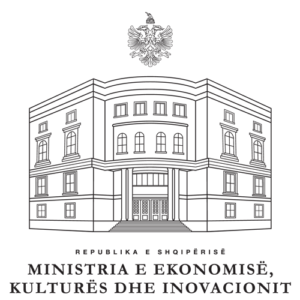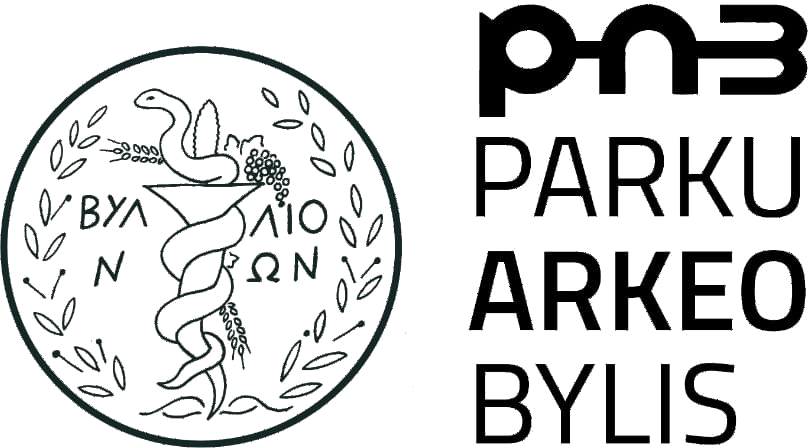Paths of Faith
The province of Myzeqe and the hilly area behind it constitutes a geographical unit rich in monuments of cultural heritage from antiquity to cult objects of various religious beliefs in all times. The traces of basilicas and churches discovered in Apolloni, Libofshë, Ardenica, Byllis and Ballsh (Gjanica Valley), testify to the basis of the early faith among the inhabitants of these regions. While Christianity is evidenced by the sermons of Saint Paul in the 1st century AD. The spread of Christianity and its acceptance as the official religion of the Roman Empire began as early as the 4th century AD. With the formalization of this religion by the Roman emperor Constantine the Great in 313 with the Edict of Milan, Apollonia was transformed into an important center of church organization, Peshkopat, which also included the city of Byllis. Until the middle of the 5th century (year 451) bishop Eusebio represents Apollonia and Byllis. After the year 451, the bishopric was transferred from Apollonia to Byllis and continued to stay here until the destruction of Bylis in the 6th century (year 586), where it was then transferred to the Basilica of Balls (Gllavenica), where it remained throughout the Middle Ages. During the 5th-6th centuries, we have a large flow of cult constructions that constitute the first peak period of the development of Christianity in our country.
The second period of the development of Christianity belongs to the second half of the 12th century and continues until the middle of the 15th century. The third period belongs to the 18th century. Throughout this period, a large number of churches and monasteries were built in Myzeqën e Vogël (Fier Area), which constitute one of the most achieved values of the Byzantine Orthodox culture of this province. There are well-known festive days for the saint to whom the church is dedicated, such as in the “Shën Mërija” Monastery in Apolloni, on August 15, etc. The inheritance of this tradition from century to century and the attendance of religious institutions by the local population have created the “Paths of Faith” which is the path to elite culture and tourism and not only that. Tourists have the opportunity to visit some of these early centers of faith, which have been preserved as tangible evidence of this heritage. Together with the Archaeological Park of Apollonia, the “Paths of Faith” is a worthy invitation to the tourism of the Myzeqe province.
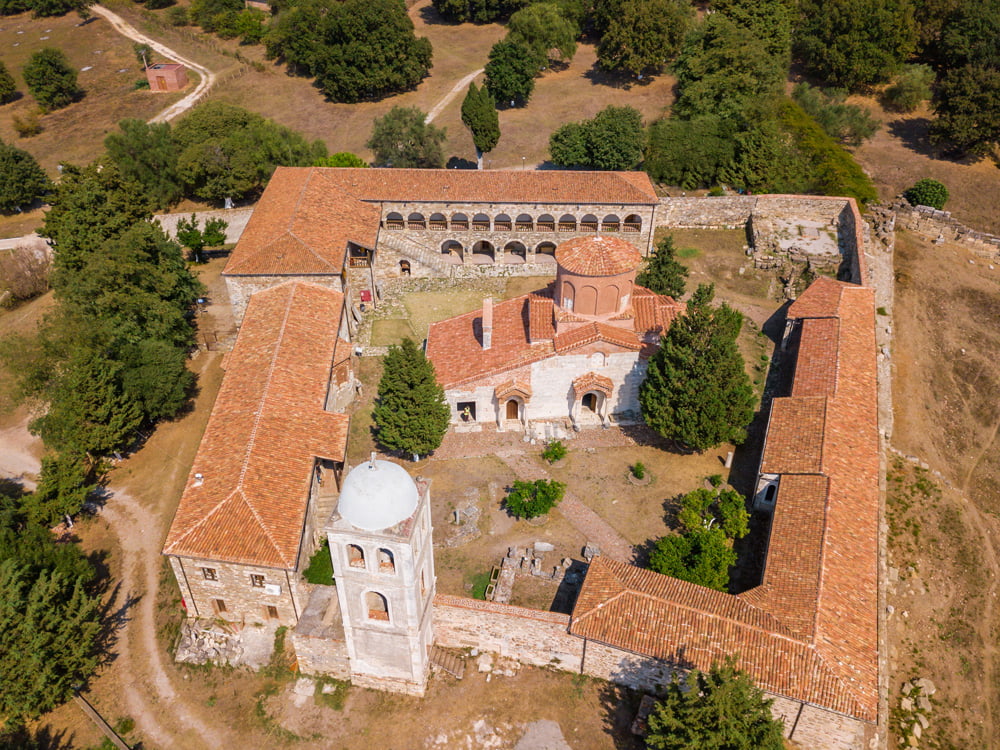
'SLEEPING OF SAINT MARY' CHURCH - POJAN
It dates from the beginning of the 13th century. The architecture of the Church of the Dormition of Saint Mary is unique in Albania. It and the monastery in which it is located, were built with architectural elements of the ancient city of Apollonia. The monastery is built on the ruins of the ancient city and a Paleo-Christian basilica of late antiquity. Its plan is in the form of an inscribed cross with a dome and belongs to the type of Byzantine churches. Its lower part is built with stones from the theater of Apollonia, while the upper part with bricks plastered with a red plaster after a later reconstruction.
The church has interwoven elements of Byzantine and Romanesque art. The colonnade of its exonarthex consists of 8 octagonal pillars, on the capitals of which mythological creatures are presented (Sirens, monster birds), which makes this church unique of its kind in the territory of Albania, having elements of the Romanesque style, clearly a style that came from southern Italy. Under its portico is a water cistern, which has as its spout a part of a column of a Doric style temple. The church was painted with frescoes, which unfortunately are preserved only in a few places. In one of them, which is located on the western side of the church, the Byzantine imperial family of Emperor Michael VIII Palaeologus is presented together with the empress and her son, Andronikos II. The painting is considered the only one in Byzantine art that presents these two emperors together.
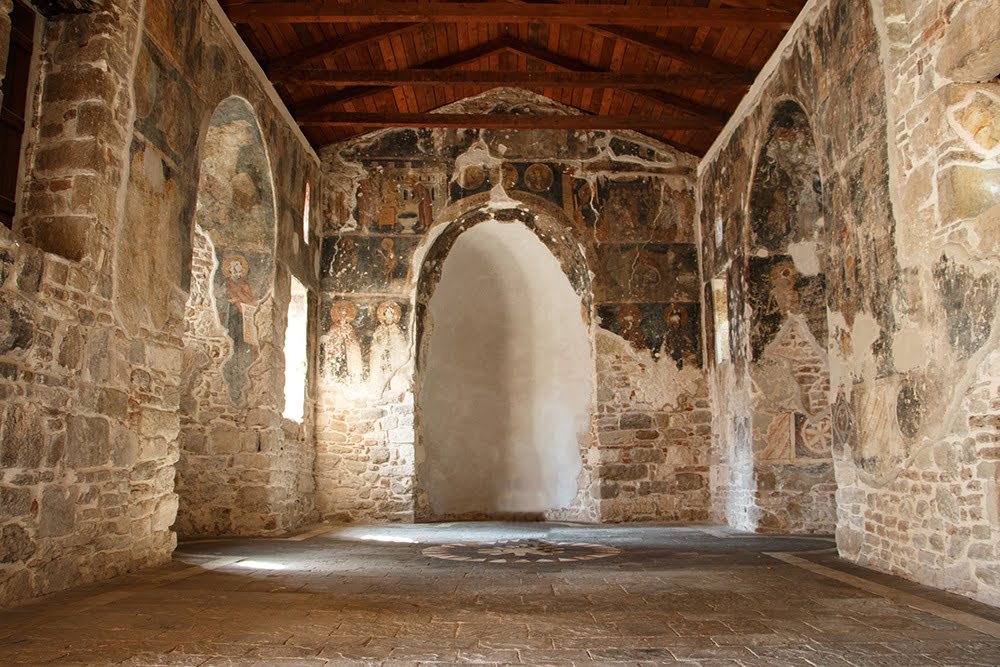

Its fragment in which Emperor Mihal VIII presents the model of the church to Saint Mary shows that the church was rebuilt precisely by his order, sometime from the end of the XIII century. Under this fresco there is another fresco and this proves that the church belongs to an earlier period, at least the beginning of the 13th century. On the outside of the church, on its southern side, there is a relief, where an eagle with a head is placed and on its wings there is a double cross, which shows that the church existed and was restored in a period later.
MONASTERY OF SAINT COZMA - KOLKONDAS
It was built in 1813-1815 with the order and help of the pasha of Ioannina, Ali Pasha Tepelena, to honor the memory of Kozma Etoli, for whom he had a special worship as a fortune-teller. On August 24, 1779, by order of the ruler of Berat, Ahmet Kurt Pasha, he was executed in the village of Mujalli and his body was thrown into the Seman river. The waters washed him ashore a few kilometers below, in the village of Kolkondas near the church of Saint Mary. It was there that his church was built along with the monastery’s guest houses. The church and some parts of the old mansions remain from the former monastery. The guesthouses are ground floor, with the rooms arranged one behind the other, preceded by an open portico with wooden pillars, which runs the entire length of the buildings.
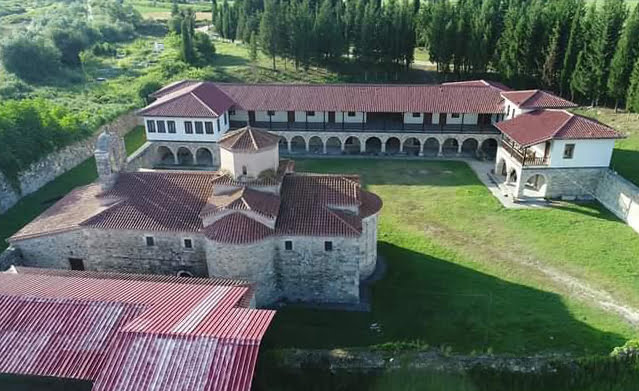
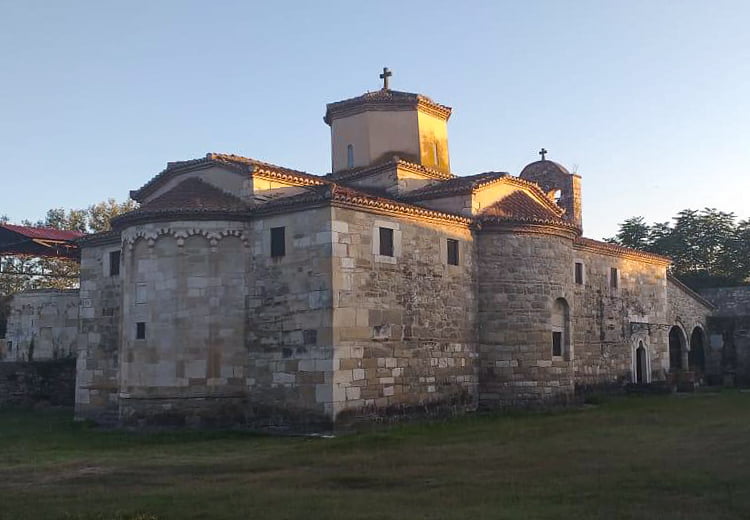
On the southern side of the church of St. Kozmai, the ruins of the church of St. Mary, destroyed by the waters of the river, are preserved. Saint Mary’s Church was painted in 1782. A chapel was built between the old and the new church in 1942, where Saint Cozmai’s relics were placed and a cenotaph where his remains were placed. The church of the monastery of Saint Kozmai is of the basilica type, with internal dimensions of 17×8.60m with three longitudinal naves. In the central part, the nave is interrupted by a transept, at the junction of which (with the central longitudinal nave), rises the dome on a high drum. The transept ends at both ends with two apses on both the north and south sides.
The carved wooden iconostasis, made in 1835, that divides the altar area. The entrances to the church are on the north and west sides. From the external view, despite the fact that the terrain has lost its initial height due to the filling of alluvium, the dynamic composition of the upper part of the building is striking. On the central face of the eastern apse and above the northern gate are placed the plaques with inscriptions. In the monastery there was also a Greek religious school and a rich library that was later transferred to the monastery of Ardenica. In 1963, the monastery was declared a cultural monument. St. Kozmai is honored every August 24 and various fairs and religious services dedicated to this day are organized there. The distance from Apollonia to the monastery is 23.4 km.
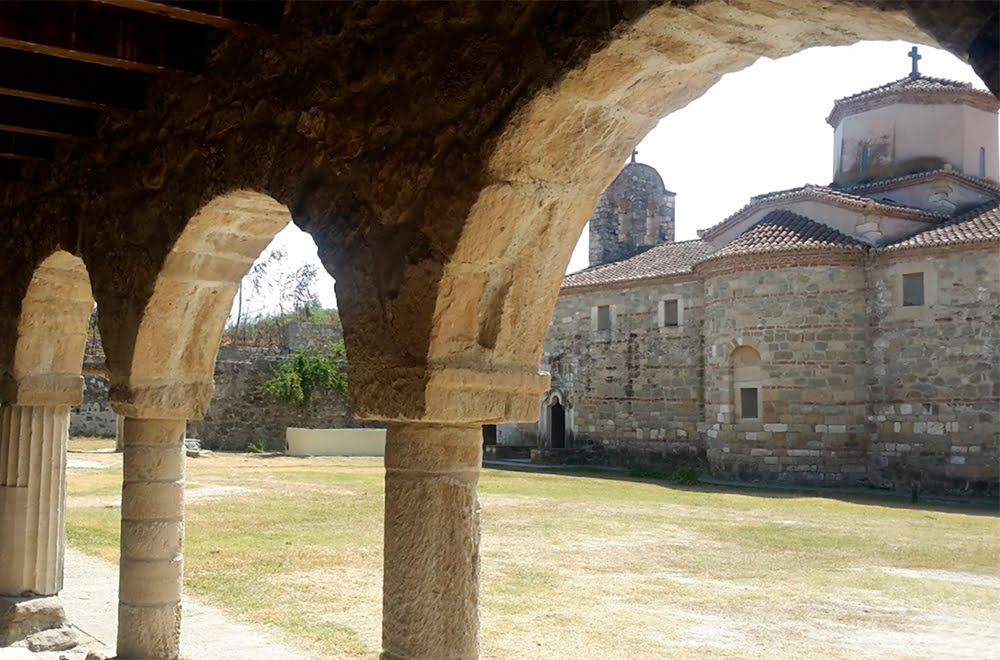
SAINT FRIDAY'S CHURCH - POVELÇË
It is dated to the second half of the 13th century. It is currently in a sub-optimal condition, but is still regularly visited by a very small number of believers.

THE MONASTERY OF SAINT MAIRY - ARDENICA
Ardenica Monastery is one of the largest monasteries and the only one where complete monastic life (solitude) takes place. It rises on the top of the Ardenica hill at a height of 237m above sea level, part of a hill range that crosses the Myzeqe plain from south to north, in a very picturesque position. It is thought that where the monastery was built, there was a pagan temple dedicated to Artemis, from which the origin of today’s name Ardenica also originates. The monastery was an investment by Emperor Andronikos II Paleologus to thank Saint Mary for the victory he gave to the Angevins during the siege of Berat. The monastery is dedicated to Saint Mary the Theotokos, and is celebrated on September 8. The first nucleus of the monastery is the Church of Saint Triadh, which has its beginnings in the 10th century, while the monastery was founded at the end of the 13th century, at the time of the Despotate of Epirus.
According to a legend, in 1451, the marriage of Gjergj Kastriot Skënderbeu and Donika Araniti was celebrated in this monastery. The central church of Saint Mary Hyjlindases was restored in 1743, with the contribution of merchants from Voskopoja. One of the most important figures who contributed to its construction was the abbot of the monastery, Nektor Terpo from Voskopoja. The monastery is built in the form of a triangle with an area of 2500 m2. In the center stands the church of Saint Mary the Theotokos, which is surrounded on all sides by monks’ residences. The church is all decorated with frescoes, the work of the Korčari brothers Kostandin and Athanas Zografi, which date back to 1744. Among the frescoes, Joan Kukuzeli from Durrës, an outstanding Byzantine musician of the 14th century, appears. The iconostasis was made around 1744 by Kostandin Shpataraku. Among his icons there was also an icon of Saint John Vladimir, where the Albanian prince Karl Topia was depicted in miniature.
Today, this icon is located in the Museum of Medieval Art in Korça. All the woodwork of this church is painted with gold paint. They contain many elements with motifs from the animal and plant world, which rank them among the most beautiful wood works of these regions. A religious school for the preparation of Orthodox clergy has functioned in the monastery.

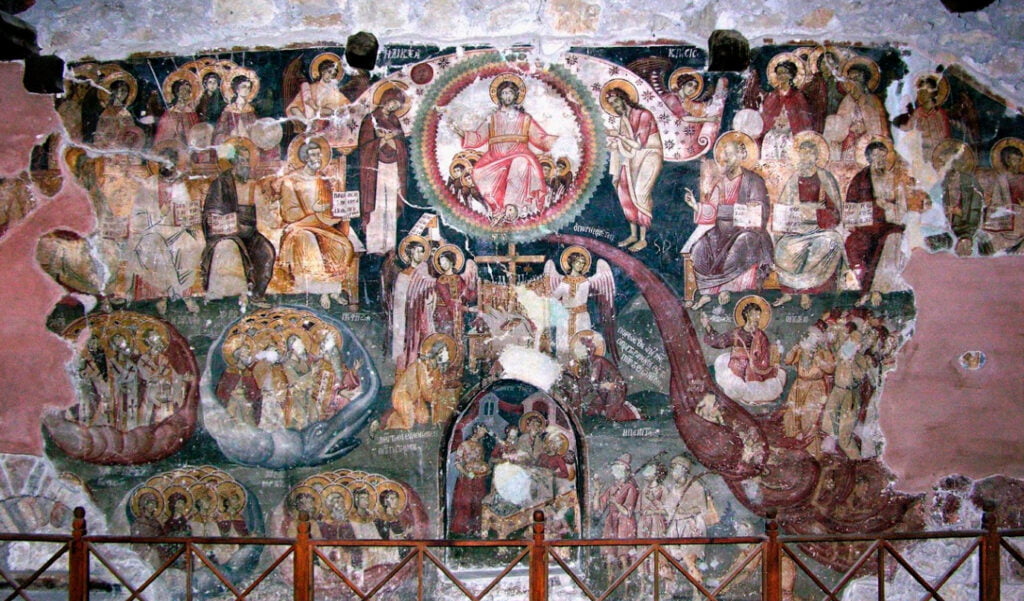
Once the monastery had one of the richest libraries in the country, but in 1932 it was completely burned, including historical documentation and other valuable objects. After the burning of the library, the monastery did not have a monastic brotherhood, but lay people served there who took care of their many properties. The Archbishops of Albania Kristofor Kisi and Irene Banushi (from Shkodra) were interned here. After 1967, a military unit was placed in the monastery, which caused a lot of damage. Later, the monastery was declared a cultural monument, and around 1978 it was opened as a center of albaturism. It was officially returned to the Autocephalous Orthodox Church of Albania in 1996. The distance from Apollonia Park to the Monastery is 25km.
CHURCH OF SAINT GEORGE - LIBOFSH
This church is erected on the top of a gentle hill, surrounded by a small forest of various woods, where the old cypresses stand out. Visitors enter through an alley with soft stairs covered by tree branches. The village cemetery is located around the church. The church is a typical representative of a variant of church constructions spread in Myzeqe during the second half of the 18th century and the beginning of the 19th century. It consists of the high nave in the center, surrounded by low porches on three sides and the bell tower in the lower part of which the entrance gates to the church are opened. In the eastern view stands out the apse, beautifully built with large, carved limestone blocks.
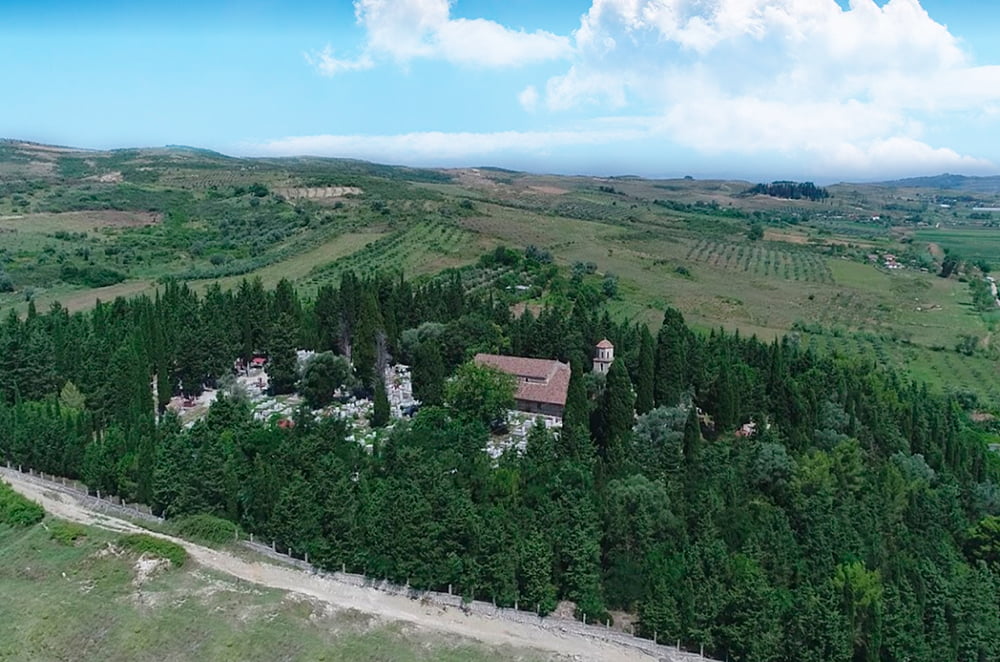
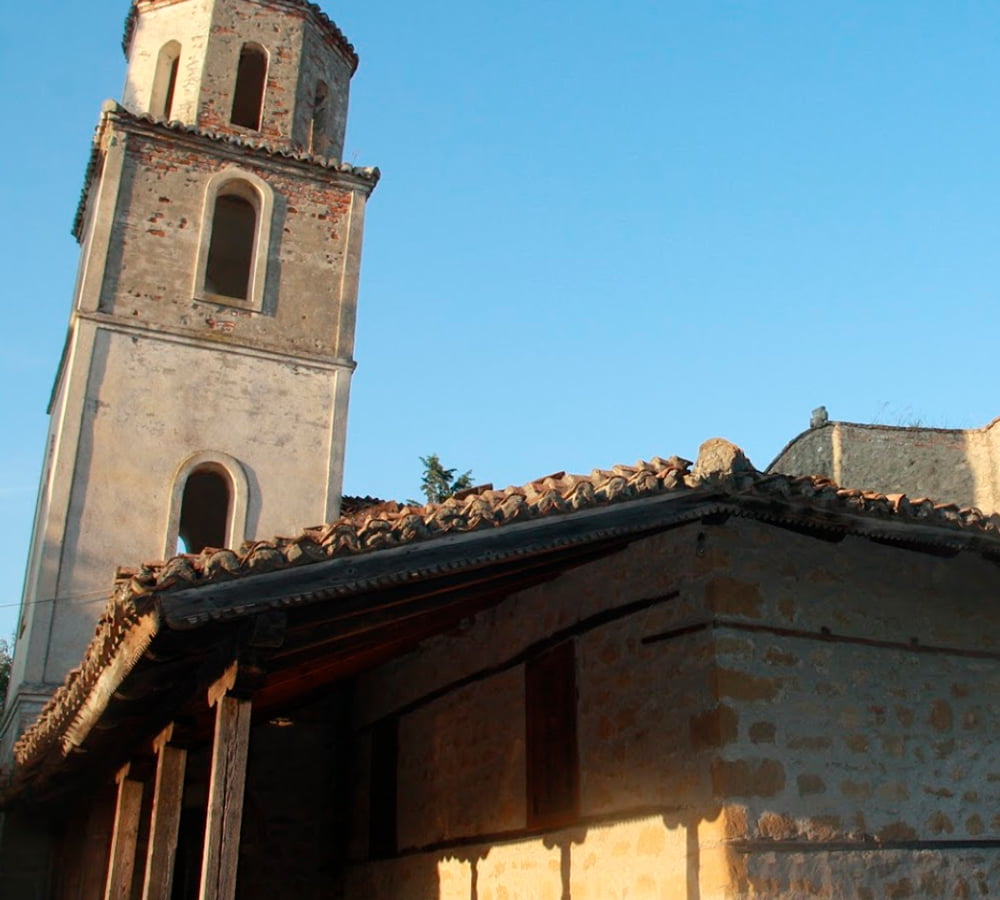
It is decorated with 7 stepped, arched niches on top and is closed with an elegant carved stone frame. Ancient architectural-decorative details taken from the city of Apollonia are plastered on the walls of the church. The construction of the church dates back to 1776. As soon as you enter its premises, the wall paintings make a surprising impression, which on the left side represent Heaven, and on the right side, Hell. The church was decorated with frescoes in 1782 by the famous painters from Korça, Kostandin Zografi together with his son Tërpon. On April 23 every year, the residents celebrate St. George’s Day here. The church was declared a cultural monument in 1963. It is located about 14 km from the city of Fier in a dominant position over the field of Libofsha.
CHURCH OF SAINT COLLI - VANAJ
It rises on the top of a small hill, surrounded by a dense cypress forest. It was built in 1777 with the same layout and architecture as the church of Saint George (Libofshë), but smaller and built with pumice stones. Its apse from the outside is decorated with ancient reliefs taken from Apollonia.
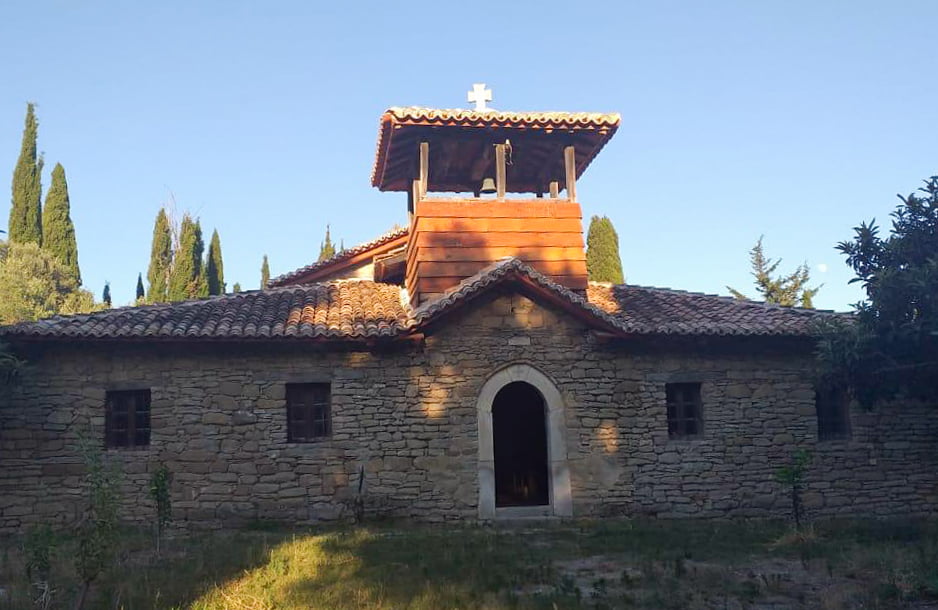
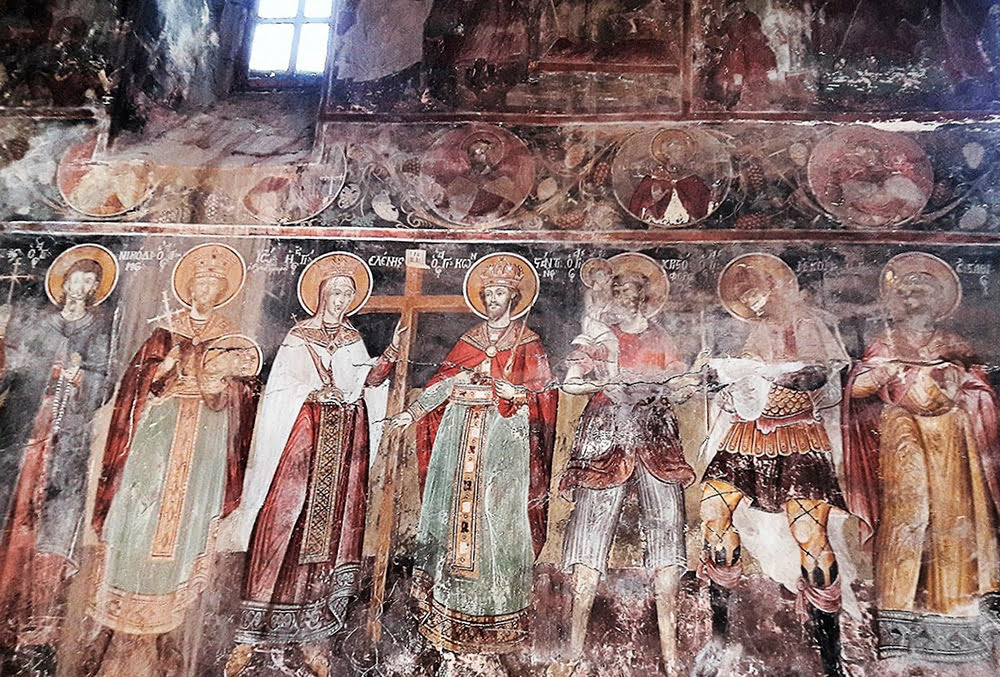
The church was painted in 1795 by Gjergji and Joani of the Çetiri family. The frescoes draw attention to the strong colors and high artistic skill of the robber brothers. The church was declared a cultural monument in 1963. It is located 17 km from the city of Fier.
CHURCH OF SAINT NICHOLAS - KURJAN
This shrine is a trenef type construction, Byzantine style in the shape of an inscribed cross with a dome. It dates back to the 13th and 14th centuries. During the 16th century, the church underwent an important restoration, where the drum was replaced with a wooden roof. Its frescoes were painted in 1578 by Onufri’s son, Nikola, together with another painter named Joan.
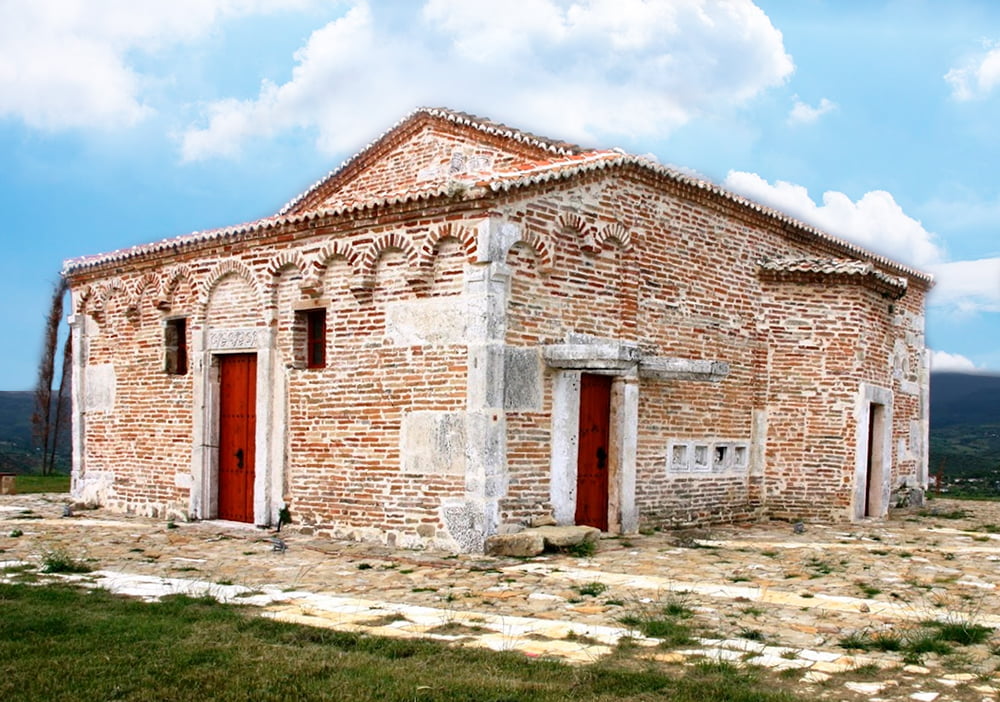
It is located in the village of Kurjan near the town of Roskovec. The church has been restored and the exteriors have been adapted for visits and the performance of artistic and cultural activities undertaken by the Municipality of Roskovec. The church was declared a cultural monument in 1963.
CHURCH OF SAINT GEORGE - STRUM
The church was built in 1782. The bell tower rises above the entrance gate, creating a kind of portico in front of it. In 1801, it was painted by the painters Joan and Nikolla Çetiri from Grabova.

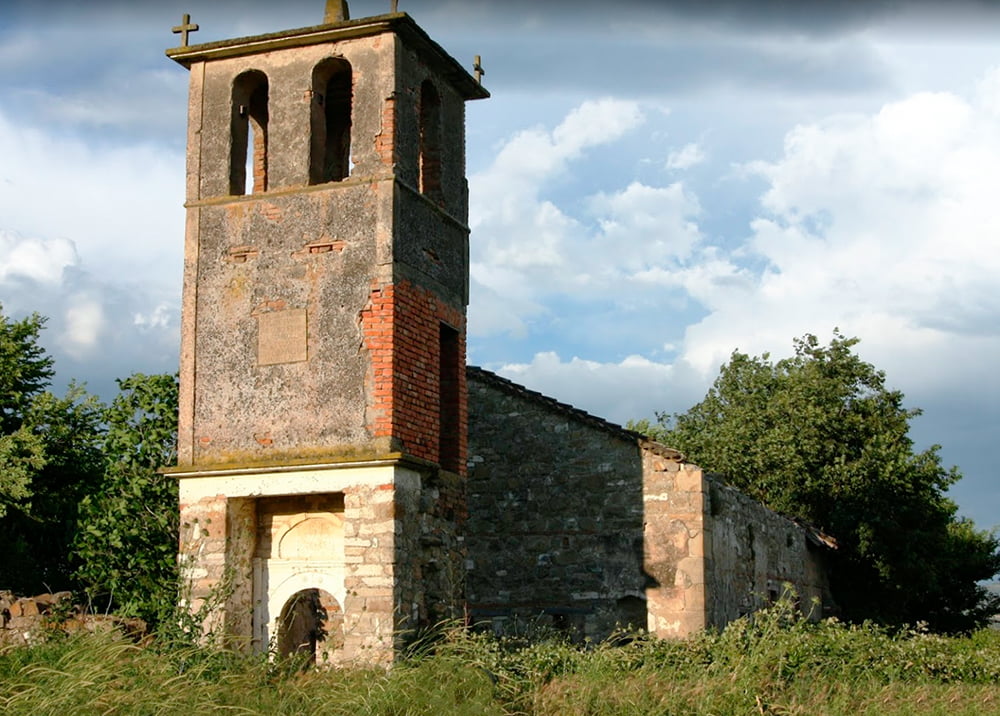
Three sides of the inner walls are currently covered with frescoes, which makes this church more interesting to visit. It was declared a cultural monument in 1970. The church is located 2 km from the Roskovec-Berat road.
MONASTERY OF SAINT MARY - ZVËRNEC
Saint Mary’s Monastery, also known as Zvërnec Monastery, was built in the 13th-14th century, while various researchers think it was founded in the 11th century. The church is of the free cross type with a nave and dome. From the construction materials and technique, two construction phases are distinguished, the narthex and the nave are identified as the earliest construction, in the part of the drum, the dome and the eastern apse, parts of the wall painting are preserved.
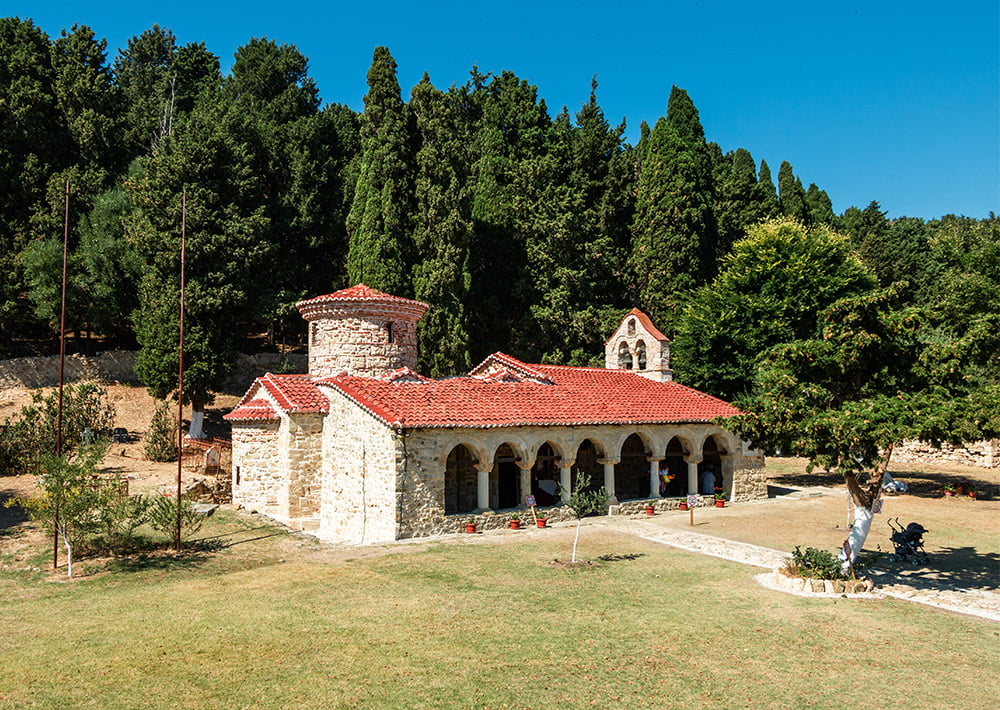
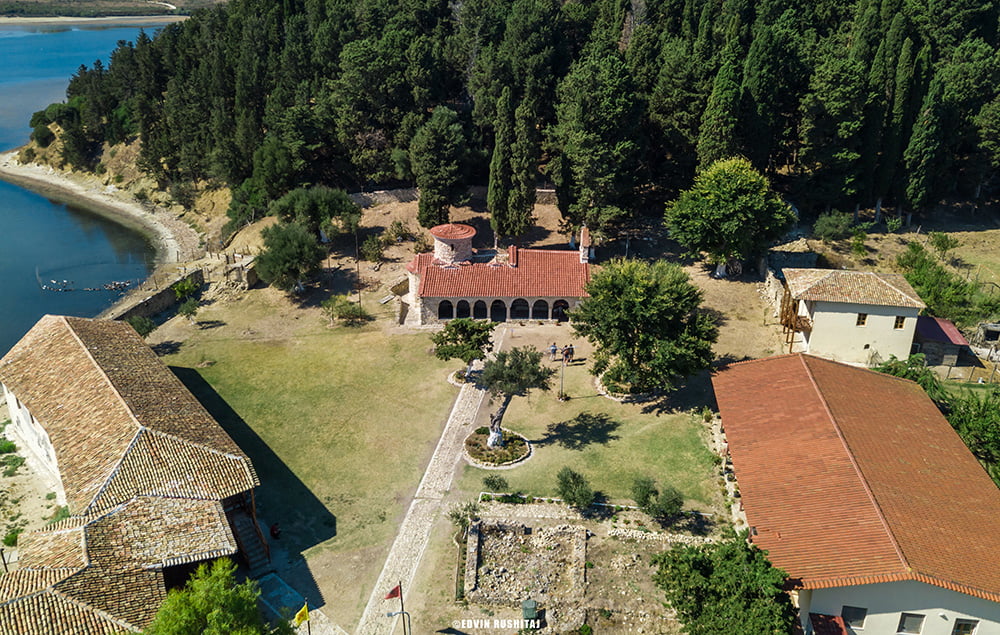
The part of the altar from the nave is separated from the iconostasis. As the second phase of construction, we distinguish the exonarthex and the bell tower. The facade of the portico is decorated with arches supported by six columns which have been worn away by wind erosion and the humid, salty air of the Narta lagoon.
